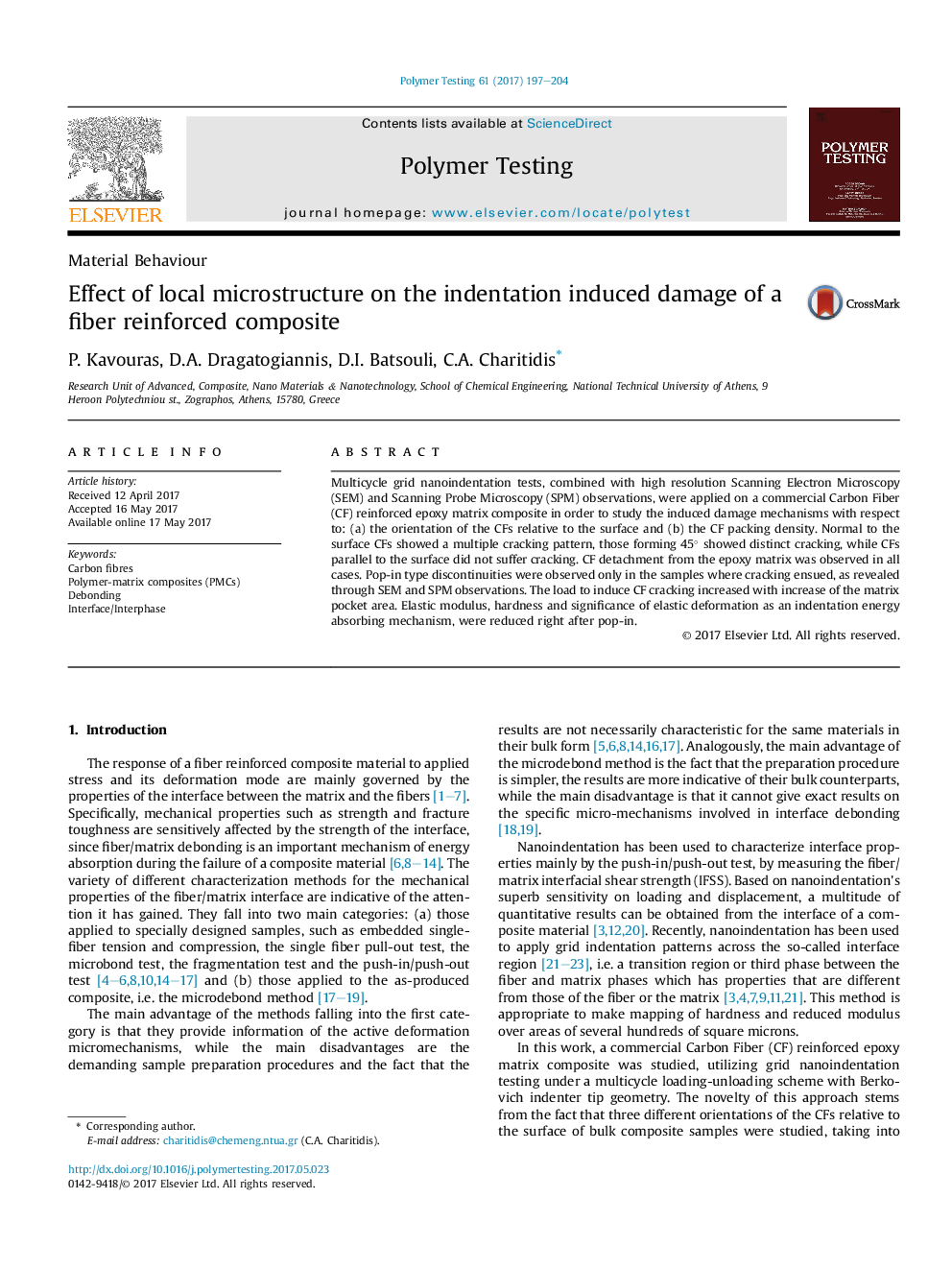| Article ID | Journal | Published Year | Pages | File Type |
|---|---|---|---|---|
| 5205326 | Polymer Testing | 2017 | 8 Pages |
Abstract
Multicycle grid nanoindentation tests, combined with high resolution Scanning Electron Microscopy (SEM) and Scanning Probe Microscopy (SPM) observations, were applied on a commercial Carbon Fiber (CF) reinforced epoxy matrix composite in order to study the induced damage mechanisms with respect to: (a) the orientation of the CFs relative to the surface and (b) the CF packing density. Normal to the surface CFs showed a multiple cracking pattern, those forming 45° showed distinct cracking, while CFs parallel to the surface did not suffer cracking. CF detachment from the epoxy matrix was observed in all cases. Pop-in type discontinuities were observed only in the samples where cracking ensued, as revealed through SEM and SPM observations. The load to induce CF cracking increased with increase of the matrix pocket area. Elastic modulus, hardness and significance of elastic deformation as an indentation energy absorbing mechanism, were reduced right after pop-in.
Related Topics
Physical Sciences and Engineering
Chemistry
Organic Chemistry
Authors
P. Kavouras, D.A. Dragatogiannis, D.I. Batsouli, C.A. Charitidis,
